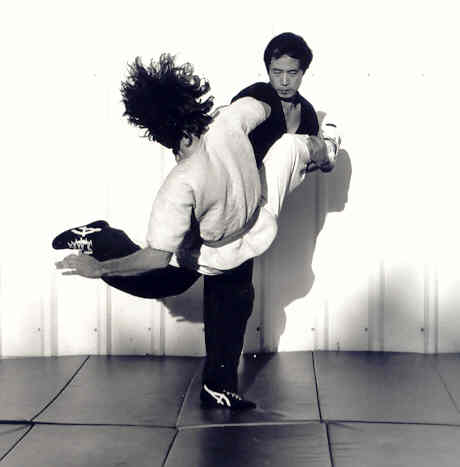oftheherd1
Senior Master
If we're not going to do anything to train for it outside of forms, then why is it in the forms? This is my question.
I assume you mean in WTF sparring rules? We teach several head punches in our basic curriculum and just ban them in the sparring.
We cover this at my school in our defense portion. But like head punches, they are banned in sparring (because Olympic rules).
So first I must understand the principles behind it.
As an example, we practice front fall and back fall at our school. The back fall position is essentially on your back, chin tucked in, hands down on the ground, feet straight in the air. When asked why we practice this, one girl explained "it's because our feet are stronger than our head, so if someone punches at our head, we get our head out of the way and we get our feet in the way so they punch our feet instead of our head."
This is what happens when you have someone trying to understand the application of a technique with no understanding of the initial application.
I'd rather have the Master's answer first and then apply my own possible twists and ideas.
Some of this has been the cycle I get myself into A LOT which goes something like this:
STEP 1: Have a question, but don't have a chance to ask it or too embarrassed to ask it
STEP 2: It's been too long and I should know it by now, so if I ask then not only is it embarrassing I didn't know, it's embarrassing I didn't ask before.
Could a spear hand be a little more difficult to block if it reaches a little further than a fist, even if not with as much power? Could it be used against pressure points? Work with that a while.
Break falls are first of all to get one to the ground as safely as possible. Generally they try to spread out the contact with the ground over several points of the body, to lessen one part of the body taking all the force. That is taught in parachute jumping in the military, or at least was, and I don't see how it could be different, except in special units who have parachutes different from mass jumping paratroops. You didn't mention getting one foot back (rare), or your buttocks. You didn't mention slapping the ground with your hands to absorb some of the momentum. Were you just leaving them out for brevity or do you do them exactly how you described them? Do you have a different explanation for sticking your feet and legs up in the air?
If you can translate yourself into a standing position from any break fall, so much the better, and if that isn't taught, you should explore it on your own. But remember you first have to land uninjured to be able to continue defending yourself.
I don't know your instructor. But the instructors who taught me, and my GM, always answered my questions, and if they saw me be doing something wrong, whether I asked or not, corrected me. You should always have a chance to ask questions. I would think the nature of Hapkido instruction should make that very easy. But if not, during a break or after class. Never be embarrassed to ask! Have you ever heard the old saw that the only dumb question is the one that isn't asked? I hope the impediment to your learning is your own ego for the embarrassment, not your teacher's way of responding.

